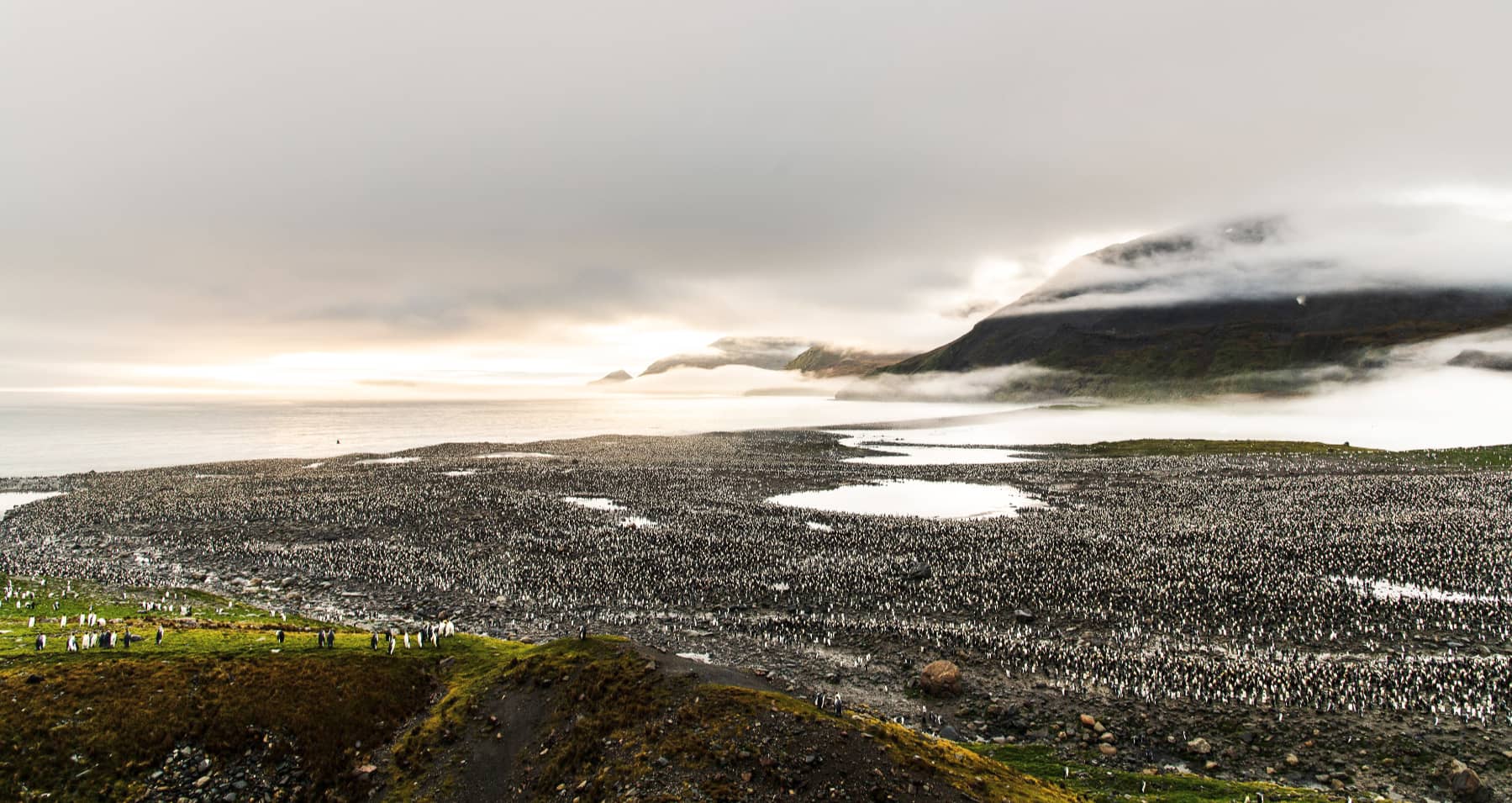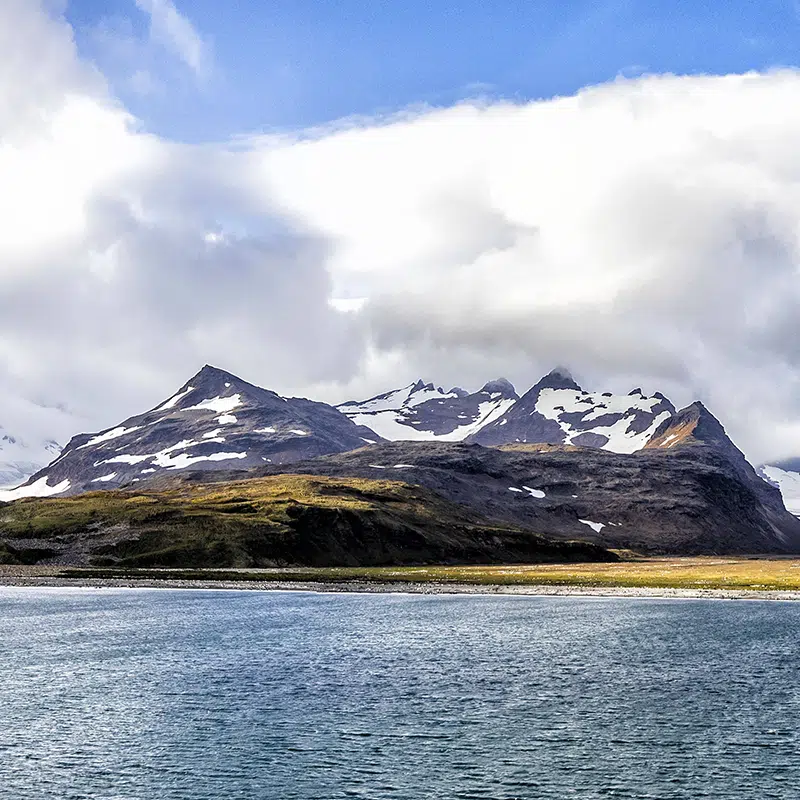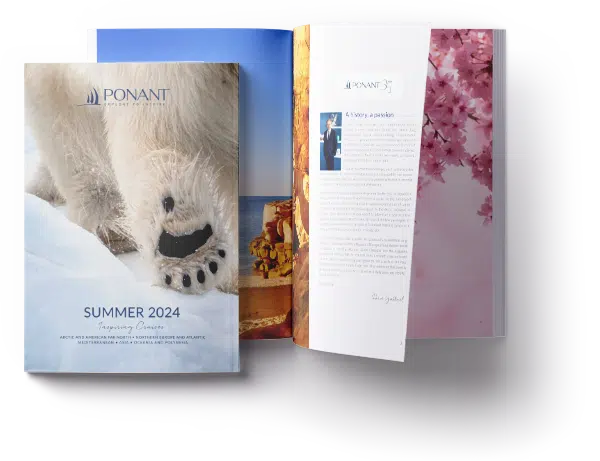Find out all about the wildlife of South Georgia and the Falkland Islands
Natural sanctuaries lying out in the ocean off the White Continent, the Subantarctic islands are home to an extraordinary range of wildlife living and existing against a majestic panoramic backdrop of wide open plains, mountains and glaciers. Alain Bidart, the naturalist guide on the Antarctic expedition cruises, reveals to us the secrets of the veritable naturalist’s paradises of South Georgia and the Falkland Islands.
South Georgia is home to vast seabird colonies. What does it look like?
Alain Bidart : South Georgia offers incredible views, with great plains and beaches filled with penguins (such as Salisbury Plain or Saint-Andrews), elephant seals, and fur seals, with mountains and glaciers making up the backdrop.
We mainly see king penguins, especially in Saint Andrews, with a colony of more than 100,000 couples, macaroni penguins as well as gentoos, chinstraps or southern rockhoppers. The king penguins, for example, can be found 1,500 kilometres from the colony. Every summer (from November to March), they’re somewhat forced to come back onto the land, for breeding.

South Georgia is known as the ‘kingdom of penguins’. What is it that makes them thrive here?
Alain Bidart : South Georgia is one of the few submerged lands in the Southern Ocean. So the penguins have no choice but to settle there. It is important to keep in mind that penguins and albatrosses are seabirds. In winter, they’re at sea. It’s also an area where they have easy access to their prey.

On an Antarctic cruise, what’s the feeling during the stop in South Georgia?
Alain Bidart : It’s incredible, and it’s often a shock. Some people cry when they find themselves in the middle of all these penguins. It’s a unique encounter with wildlife. There are very few places like this still exist on the planet. Especially since penguins are not afraid. They carry on what they’re doing, as if you weren’t even there. We are totally immersed in their living environment.

On an Antarctic cruise, what is it that makes the Falkland Islands an interesting stopover for bird watching?
Alain Bidart : The Falklands’ geography is a little complex. They are composed of many islands and peninsulas, which are inhabited by man. In some areas, there are no animals, in others, entire colonies. Debarkation is easy there. And we’re welcomed by private property owners on their own land to observe the wildlife. It’s a unique human exchange.

How do the different bird species live together?
Alain Bidart : They don’t really interact. On land, they nest in separate areas. They all have their own places: the king penguins stay at sea level, the macaronis up higher in the tall grasses (tussack), the wandering albatrosses go up even higher, where they have a good runway to take off. In the Falklands, black-browed albatrosses dot the cliffs.
At sea, the birds hunt different prey at different depths. Krill for the macaronis, lantern fish for the king penguins who can dive up to 400 meters deep, and squid for the albatrosses.
What does the future hold for them? Are they endangered?
Alain Bidart : There are some clear threats. The biggest one for albatrosses and petrels is still longline fishing. Many birds cling to the hooks. Hundreds of thousands die this way every year. But things are changing. Measures have been taken in South Georgia. Since then, there have been no further losses.
Other threats are less obvious. There could be a lack of krill in the long term if the ice floe diminishes around Antarctica, and the warming of the oceans will also change the presence of prey and therefore affect the birds. But we don’t have enough perspective yet.
To know more about the king penguin, watch the video:
Photo credits: ©Studio PONANT / Violette Vauchelle, Julie Lacombe, Leslie Levadoux; ©iStock




